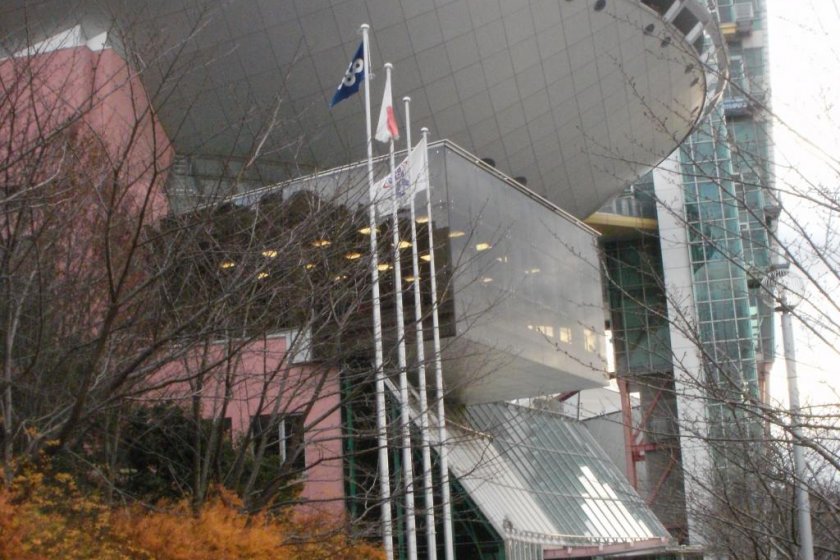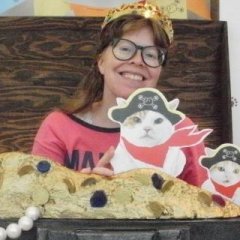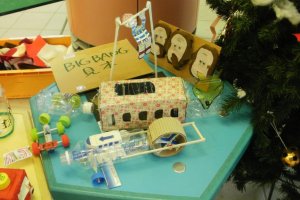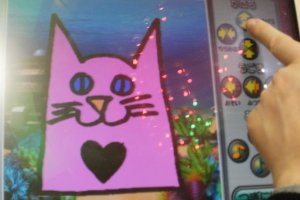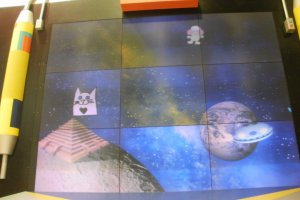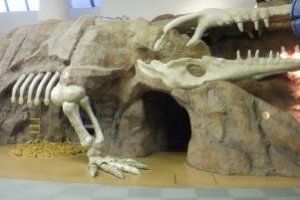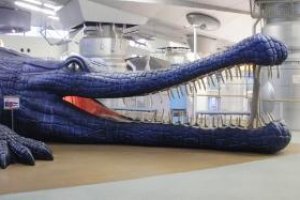Arriving at Izumigaoka Station on the Senboku Kosoku line in Sakai City, Osaka, the casual observer may spot a UFO hovering across the pedestrian bridge from the East Exit. The craft is actually part of the Big Bang Children’s Museum, a place of discovery and fun for all ages.
Many attractions here are in keeping with the space exploration theme of the building façade. An asteroid-shaped movie screen on the wall above the lobby gift shop shows images of stars and planets. Near the two Warp Capsule elevators, artifacts on display include a rocket engine and a uniform worn by Japanese astronaut Mukai Chiaki. The second floor boasts the Space Kitchen, where groups of up to sixteen children and adults can make doughnuts, parfaits or seasonal sweets on weekends or national holidays. The Heartipia Electrical Zoo allows visitors to transform a drawing into a character appearing in an animated space or undersea adventure.
Toys are also a recurring theme in the museum. On the second floor, in addition to a play area with small toys and picture books, Bear’s Repair Shop provides milk cartons and plastic bottles for children to recycle into original playthings.
Various indoor playgrounds fill the third floor. A mountain with dinosaur fossils sticking out of it contains hidden tunnels, climbing ropes, a sliding board and a trampoline for energetic fun. A stroll through a giant blue lizard offers a look at the creature’s internal organs…and, yes, one of the exits is under the tail. Kids can climb on a treehouse and, if under age five, a Jack-and-the-Beanstalk themed area. Quiet play is possible in the wooden toy corner.
A time tunnel on the fourth floor brings visitors to the Sakai City of 1955-1975, with replicas of the buildings of the era. The window of an appliance store is a clever frame for a display of vintage televisions and radios, and the fried octopus balls in the takoyaki shop look almost real enough to eat. Turn the corner and walk through a lane of Rube Goldberg – inspired machines, featuring balls rolling and animals moving with help from visitors’ handcranks. In the Toy Time Tunnel, Licca, a doll beloved by Japanese girls for decades, is represented with a human-sized version sitting in her own living room. Perhaps the doll comes to life at night and enjoys the enlarged games including backgammon, shogi (Japanese chess) and fukuwarai (face-making puzzle). She might also watch the animated adventure of the museum’s mascot characters in the Power Unit Theatre.
From the fourth floor, visitors can enter the eight-story Toy Tower. The top floor offers panoramic views of the surrounding area. Visitors can then return to the main building via the elevator, stairs, or a network of chutes and ladders from floor to floor.
An English-language pamphlet is available at the reception desk, but there are almost no English signs or explanations at the attractions. A basic understanding of Japanese is helpful, but not essential, to enjoy a day at this museum.
